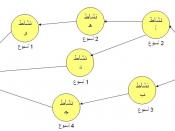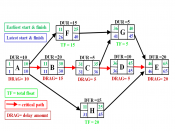12. Critical Path: "The Critical path is the longest duration path through the project.
The significance of the critical path is that the activities that lie on it cannot be delayed
without delaying the project. Because of its impact on the entire project, critical path
analysis is an important aspect of project planning." The next phase of the project cannot be started or completed until the tracking of last task has been completed. This allows for the controlled tasks to be monitored for each step of the project on its critical path and will allow no slack. A majority of our tasks fall on the critical path. Our project needs to be well managed to make sure the project is not delayed by task going over the set schedule. As long as the project stays on target the critical path will not change.
13. Status Reports: Given weekly by the Project Coordinator to the Project Manager and on up the corporate ladder.
The Project Coordinator includes the following information from supervisors and managers of specific divisions that are handling the project. The Coordinator also briefs the Project Manager on what is actually happening with the project and what was originally planned. Other factors are included such as costs, performance, and scheduling conflicts. We have scheduled status reports every Wednesday to make sure we can keep on top of the current task and project any future risks we may run into.
14. Event-Driven Reports: Based on specific phases of completion within the project. These types of reports can also have milestones within the project or significant events that have occurred along the project life cycle. Task completion reports are one of the most significant Event-Driven reports. A specific Event-Driven report for the group's current project would be the License Acquisition Agreement.


